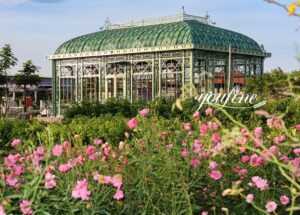Large wrought iron greenhouses have become iconic statement pieces for estates, castles, wedding venues, restaurants, spas, and bespoke luxury projects. Their graceful lines, ornate ironwork, and timeless Victorian or European architectural style make them more than just structures—they’re destinations. Whether used as an event hall, a dining pavilion, a relaxation space, or an architectural focal point, these greenhouses must deliver both beauty and absolute structural reliability.
And naturally, every owner or designer has one essential question: Can such a large iron greenhouse stand strong through heavy snow, powerful winds, or sudden storms? A space meant for hosting guests and special moments must be as safe as it is elegant.
In this blog, we’ll break down how large iron greenhouses are engineered to handle snow load, wind load, and extreme weather. From structural frames to material choices and reinforcement methods, you’ll see what truly supports these impressive architectural features—ensuring they remain secure, stable, and stunning through every season.
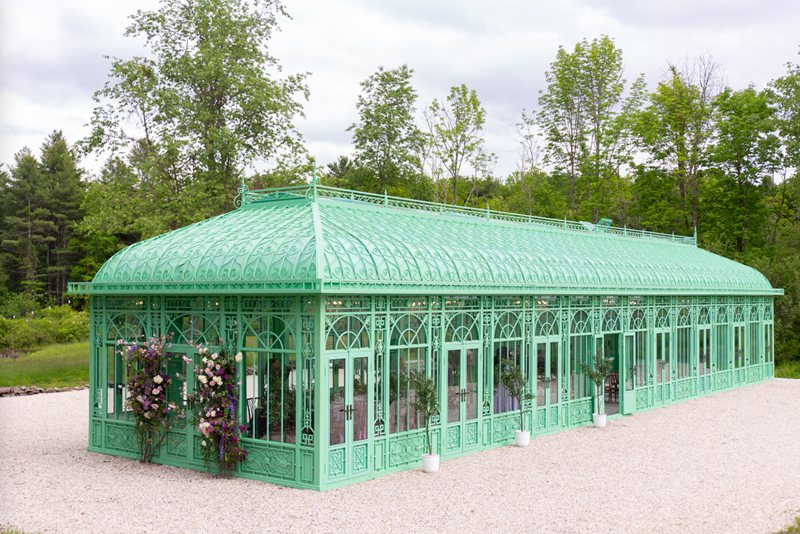
Why Weather Resistance Matters for Large Iron Greenhouses
For many estates, castles, wedding venues, and luxury hospitality spaces, a large iron greenhouse isn’t just an accessory—it’s a signature architectural feature. It often serves as a ceremony hall, a dining pavilion, a relaxation space for guests, or a landmark centerpiece that reflects the identity of the entire property. With a structure that holds such visual and functional importance, safety under harsh weather becomes absolutely non-negotiable.
Unlike small garden structures, large iron greenhouses have a wide span, tall height, and expansive glass or polycarbonate surfaces. This means snow load, wind pressure, and storm impact can be significantly stronger. A single winter storm or unexpected wind event can put substantial force on the roof, walls, and foundation. For venues that welcome guests year-round—or that rely on flawless experiences for weddings, fine dining, or spa environments—structural reliability directly affects daily operations and client confidence.
This is why weather resistance is a core part of the engineering behind every large iron greenhouse. When designed correctly, these architectural structures maintain long-term stability, protect guests, and preserve the beauty of the space no matter the season.
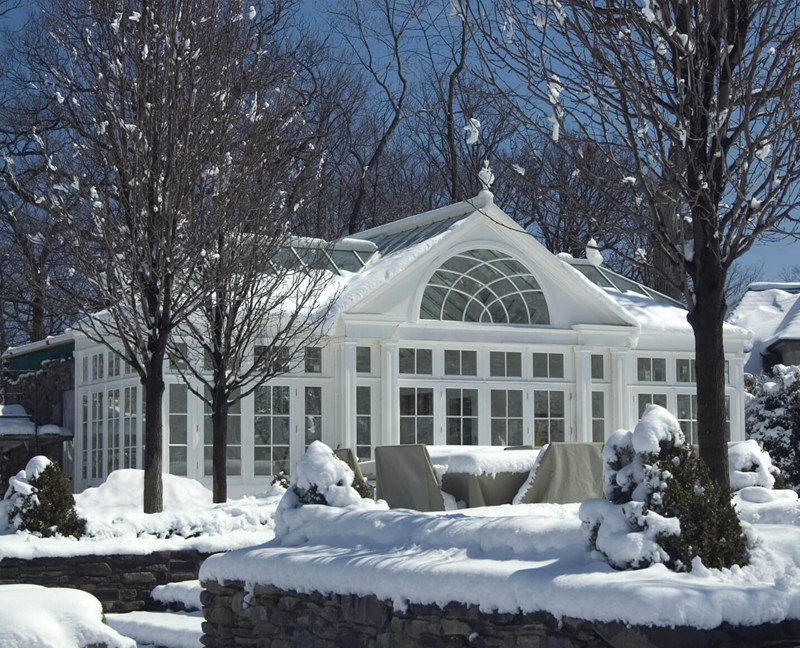
How Iron Greenhouses Handle Storms
Storms combine multiple forces at once—heavy rain, sudden gusts, rapid temperature changes, and sometimes debris impact. For large iron greenhouses used as wedding halls, dining venues, spa lounges, or landmark structures on estates, reliability during extreme weather is absolutely essential.
1. Fully Hot-Dip Galvanized Steel for Long-Term Durability
During extreme weather, moisture is everywhere—rain, humidity, condensation.
This is why large architectural iron greenhouses use full hot-dip galvanization inside and out, creating a thick protective zinc coating that prevents rust and corrosion.
Even after decades of storms, the structure remains strong, making it ideal for coastal properties, rainy regions, and luxury venues that operate year-round.
2. Advanced Drainage Systems for Heavy Rain
Extreme rain isn’t just about water falling from above—it’s about preventing water buildup and load concentration.
Architectural iron greenhouses include:
- Oversized gutters
- Deep rain channels
- High-capacity downpipes
- Optional underground drainage integration
This ensures water flows away quickly and prevents excessive weight on the roof or flooding around the foundation.
3. Engineered and Customized for Local Climate Conditions
The key to storm reliability is customization.
Whether the greenhouse is installed on:
- A coastal resort
- A mountain estate
- A rainy European castle
- A U.S. venue prone to seasonal storms
The structure is engineered to local codes and real environmental conditions.
This ensures that the greenhouse is not only beautiful, but fully capable of protecting guests and hosting events safely through unpredictable weather.

How Iron Greenhouses Handle Snow Load
Snow load is one of the biggest structural challenges for large iron greenhouses—especially in regions with long winters or heavy storms. But with the right engineering, these elegant architectural structures can safely carry significant snow weight without compromising beauty or functionality.
1. Roof Geometry That Naturally Sheds Snow
The roof isn’t just about aesthetics. Victorian peaks, arched domes, and steep slopes all help snow slide off instead of building up. A steeper angle reduces the amount of snow that can rest on the surface, minimizing pressure on the frame and joints. This is why larger greenhouses often use pointed or curved rooflines—not only for beauty, but for natural load reduction.
2. Reinforced Truss and Beam Systems
Inside the roof structure, a network of trusses, purlins, and support beams distributes weight evenly across the entire frame.
Instead of allowing snow to push down on any single point, the load is spread throughout the structure, which significantly improves overall strength. For wide-span designs—like event spaces or dining pavilions—engineers often tighten the spacing between beams or increase the beam thickness for added security.
3. Heavy-Gauge Steel Frames
Large iron greenhouses use thicker steel profiles than typical pvc material. These heavier sections are designed to withstand higher vertical loads and long-term pressure. Combined with full hot-dip galvanizing, the steel remains strong and rust-resistant even after decades of winter exposure.
4. High-Strength Glazing Materials
Whether using tempered glass, laminated safety glass, or thick polycarbonate panels, the roof glazing also contributes to snow-load resistance. These materials are designed to handle pressure without cracking or deforming.
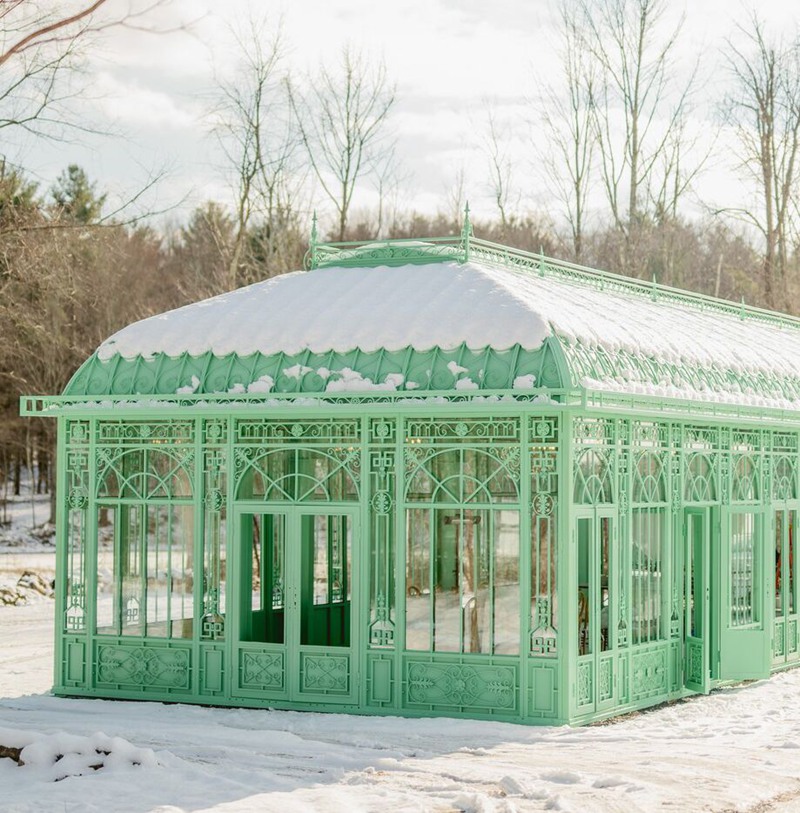
How Iron Greenhouses Handle Wind Load
Wind load is a major consideration for large iron greenhouses—especially those installed on open estates, coastal wedding venues, hilltop properties, or wide ranch-style landscapes where wind pressure can be significantly higher. A beautifully designed iron structure must also be engineered to stand firm against strong gusts, seasonal storms, and sudden changes in wind direction.
1. Aerodynamic Roof Shapes That Reduce Wind Pressure
The silhouette of the greenhouse plays a big role in how it handles wind.
Curved domes, Victorian peaks, and streamlined arches allow wind to flow over the structure instead of striking flat surfaces directly. This reduces uplift forces and minimizes the risk of pressure points. Even decorative elements—like finials or cresting—are often designed to help break up wind flow rather than catch it.
2. Deep Anchoring and Reinforced Foundations
A greenhouse can only resist wind as well as its foundation allows.
For high-end architectural projects, foundations typically include:
- Deep-set concrete footings
- Heavy-duty anchor bolts
- Structural steel base plates
- Perimeter beams for load distribution
This anchoring system prevents uplift and sliding, even during strong gusts or continuous coastal winds.
3. Heavy-Gauge Iron Frames Designed for Uplift Resistance
Wind doesn’t just push—it pulls upward.
To counter this, large iron greenhouses use thicker steel profiles and reinforced connections that lock the frame securely to the foundation. The strength of the metalwork ensures the structure stays grounded, even under the suction forces of powerful winds.
4. Impact-Resistant Doors and Windows
Doors and vents are common weak points in standard greenhouses—but not in architectural iron designs.
Upgraded hinges, multi-point locks, and reinforced frames prevent doors or windows from being forced open by sudden gusts. When needed, laminated glass or thick polycarbonate adds extra protection against flying debris.
5. Engineering Based on Regional Wind Standards
For luxury projects, the greenhouse is typically engineered according to the client’s local wind requirements.
This means a structure in:
- Florida may follow hurricane-resistant standards
- Texas or Australia often requires stronger lateral bracing
- Coastal estates need improved anchoring to withstand ocean winds
Customization ensures the greenhouse performs safely in its real environment—not just on paper.
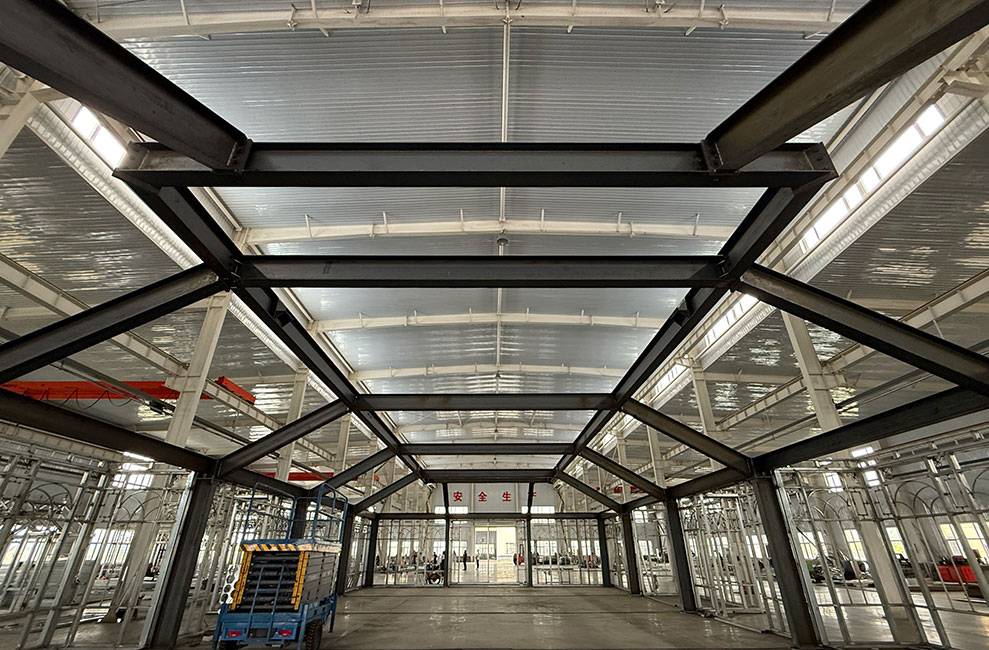
Why Choose YouFine Iron Greenhouse
- Fully Customizable – Size, style, and structure tailored to your needs.
- 40 Years of Expertise – Factory-direct production ensures quality and aesthetics.
- Detailed Drawings Provided – Complete design and installation blueprints included.
- Engineering Support – Assistance with wind load calculations and approval processes.
- Custom Colors – Choose from a palette of finishes to match your vision.
- Trusted Globally – Perfect for castles, estates, weddings, restaurants, and luxury spas.
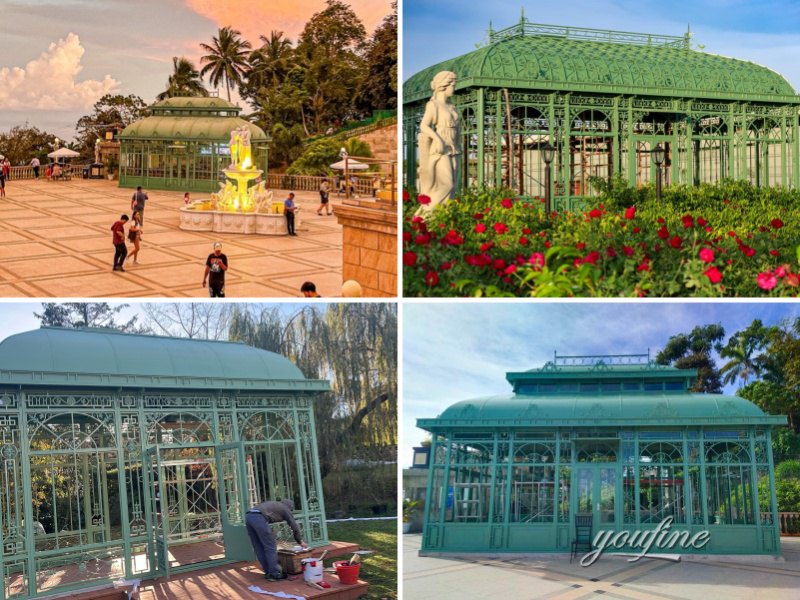
In Conclusion
Wrought iron greenhouses are more than architectural features—they are a blend of elegance, durability, and engineering precision. YouFine’s expertise ensures every greenhouse withstands snow, wind, and storms while elevating the beauty of castles, estates, wedding venues, restaurants, and luxury spas.
Choosing YouFine means investing in a custom-designed, meticulously crafted structure that is both visually stunning and resilient in any weather.

